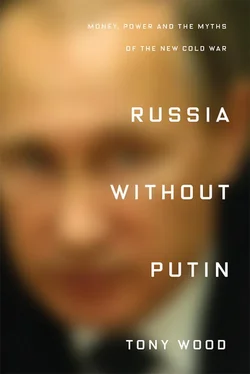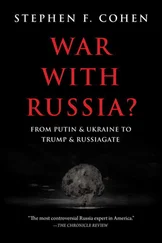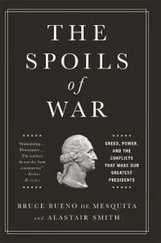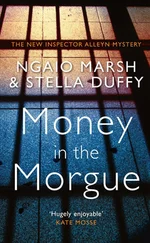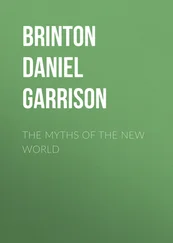But how long can this state of affairs continue? In the immediate future we are unlikely to see a dramatic improvement in relations between Russia and the West. Again, some kind of rapprochement is certainly possible. But beneath the mutual suspicions of the present, and beyond any potential pragmatism in future, the interests of the two parties remain fundamentally incompatible, and the West has no reason to alter its course. Ironically, its very hostility to Russia, and to Putin in particular, is the best insurance policy for the ‘imitation democratic’ regime. For now, the entwinement of the Kremlin’s domestic fortunes with its foreign policy choices is a bonus for the system rather than a liability. But although the Kremlin’s appeals to patriotism have enjoyed a certain success among the Russian public, they have also been largely defensive in nature, producing reflex responses rather than generating positive attachments or ideals. For the Putin-led system, nationalism is a default ideology, a means of legitimizing the continuation of its power, rather than an active political project. This is what has made its propaganda ultimately so hollow: the frenzied imaginings of state media are a sign of the weakness of their grip on the popular imagination, rather than its strength.
Yet the very character of the system – a predatory, authoritarian elite presiding over a vastly unequal society – will inevitably generate further social tensions, sparking recurrent crises which cannot all be resolved by patriotic mobilizations or military adventures abroad. ‘Imitation democracy’, and the post-Soviet capitalism it was built to defend, will no doubt be able to survive many upheavals. But it seems unwise to bet on its indefinite continuation, given the speed with which the USSR unravelled over the course of 1991, and the Romanov empire before it a century ago. These twin spectres of disintegration have haunted the imagination of Russia’s rulers since the fall of Communism, and they stalk the corridors of the Kremlin still, waiting for another of those rare, history-shattering moments when they can take on solid form.
TO SAY THE RUSSIAN presidential election of 18 March 2018 was not a contest would be a gross understatement. Everything unfolded according to the Kremlin’s script. Not only was Putin re-elected by a crushing majority – he won 77 per cent of the vote, compared with a mere 12 per cent for his nearest rival, the Communist Party’s Pavel Grudinin – there was also a satisfactory 68 per cent turnout, dispelling Russian officialdom’s fears that voter apathy would undermine the legitimacy of the poll. Independent observers reported hundreds of instances of ballot-stuffing and other irregularities, but these were breezily dismissed by the Central Election Commission. {1} 1 For a map of violations reported on election day, put together by the independent election monitoring organization ‘Golos’, see kartanarusheniy.org .
To no one’s surprise, Putin effortlessly secured another six-year term, extending his hold on power to 2024.
This was a textbook demonstration of the ‘imitation-democratic’ system in action: all the appearances of electoral democracy with none of the uncertainty. But while the vote posed no problems for the regime internally, it took place at a moment of dramatically heightened external tensions. Two weeks beforehand, on 4 March, the attempted murder of former Russian spy Sergei Skripal and his daughter in the quiet English town of Salisbury had immediately been blamed on his former paymasters in the Kremlin. The weapon apparently used, a nerve agent based on the Novichok series developed in the USSR in the 1970s and ’80s, made Russian involvement somewhere along the line – whether by the state or by non-state actors – seem likely. Amid the uproar and conspiracy-mongering the incident unleashed, no convincing explanations were advanced as to why the Russian state would make an already bad situation so much worse for itself. But the mysterious facts of the case were soon enough overshadowed by its consequences: sanctions, tit-for-tat expulsions of diplomats, closures of consulates. The incident drove already dismal relations between Russia and the West to new lows, making it even harder to imagine a normalization in the near future.
This combination of domestic stability and turmoil on the international front set the parameters for the immediate future of Russia’s imitation-democratic system. But behind the events of early 2018 lay a larger question concerning the system’s long-term prospects. It had been prompted, ironically, by the very ease and inevitability of Putin’s victory. Since it had long been obvious what the outcome of the 2018 elections would be, in the run-up to the vote many minds in Russia turned to the end of Putin’s forthcoming term, when he would be constitutionally ineligible to run again. Who or what would succeed him in 2024? An eerie temporal displacement seemed to have taken place, in which confirmation of Putin’s domestic political dominance was shadowed by thoughts of its eventual end, his success in the present trailed by his future departure from the scene.
What had appeared on the horizon – still distant for now, but visible – would be the end of an era. By early 2018 Putin had effectively outdone Brezhnev’s eighteen years as Soviet leader. Assuming he makes it through to the end of his new mandate, Putin will have ruled his country for a quarter of a century. Perhaps a fifth of the Russian population has never known any other leader. In that sense, the very length of Putin’s hold on power has amplified the problem of succession common to many political systems – how to manage the transition from one leader to the next without massive instability or infighting? Putin’s age and apparent good health seemed to add another layer to the problem: what is a figure who has held such power supposed to do in his retirement? Will Putin be content to retreat gracefully to the wings, leaving the stage clear for a new imitation-democratic figurehead? And – very much related – will his successor be able to shield him from prosecution as Putin himself protected Yeltsin?
But while the urge to speculate about Putin’s personal fate is understandable, it is ultimately misguided. It prolongs the tendency to focus excessively on this single individual in order to understand Russia. The imitation-democratic system has indeed functioned much to the satisfaction of Russia’s elite with Putin in charge. But it is fundamentally a system – that is, a set of power structures and political practices that has enabled Russia’s particular, post-Soviet form of capitalism to thrive. That system can certainly continue with another person at its summit – perhaps less smoothly, or perhaps better. The question we should really be asking, in fact, is not whether the system can function without Putin, but how long it can keep functioning in the same way, regardless of who is in charge.
On the one hand, the outlook for the regime is not especially positive. In addition to a tense international climate and unfavourable economic winds, it must struggle against its own internal exhaustion. The centralizing, neoliberal energies of Putin’s first presidential term have been left behind, and while the patriotic turn after 2012 and the confrontation with the West have certainly helped firm up the regime’s domestic support, they can’t fully compensate for a lack of other motivating ideas or projects. On 1 March 2018 Putin made a speech laying out his governing agenda for the next six years. The part that drew the most attention in the West, inevitably, was his announcement – complete with video animations – of shiny new hypersonic missiles that could get around Western defence systems. The speech also promised increased spending on infrastructure, health care and education, as developmental priorities for the coming decade. But promises of this kind have been made before and proven hollow. The 2018–2020 budget, approved in December 2017, certainly envisaged no significant alterations to the system’s current priorities. If anything, the new government will most likely simply continue the budgetary austerity and ‘optimization’ measures of the past few years, which have brought school and hospital closures even as wages and pensions lag well behind inflation. {2} 2 See Ilya Budraitskis, ‘The Very Best Day’, ArtsEverywhere.ca , 16 March 2018; and Sergey Zhavoronkov, ‘Two Lean Years: Russia’s Budget for 2018–20’, Intersection Project , 6 December 2017.
In mid-June 2018, just as the country was distracted by the start of the World Cup, the government announced a plan to increase the retirement age, by five years for men and eight for women – highly regressive moves which the Kremlin may yet have cause to revisit.
Читать дальше
